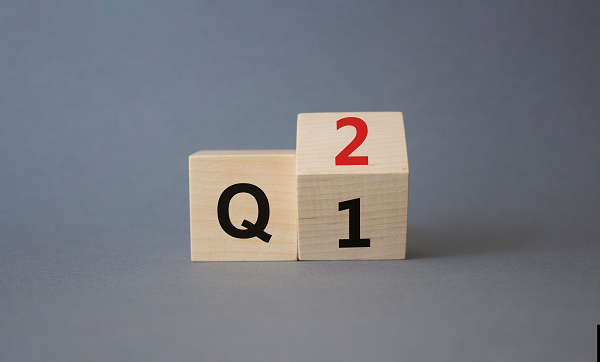
2023 - Q2 Quarterly Keynote
BY: RYAN P. JOHNSON, CFA, CFP® - MANAGING DIRECTOR OF INVESTMENTS
As we looked back over the investment news highlights of the second quarter, investors were mostly focused on the Fed, but stock investors also enjoyed exiting the bear market of 2022.
Stock returns over the past 12 months flipped from negative to double-digit positive, as another good quarter rolled on and a bad quarter rolled off. Thinking back to this time last year, we had just formally recognized a bear market in June, inflation was high, the Fed was aggressively raising rates, and investor sentiment was extremely negative. Despite lower stock lows that came in October, higher interest rates, and many other concerns that followed, investors who stuck to their plan benefited, as we said at the time “These are the risks that create the reward.”

Stocks gained an above-average amount over the past 12 months. There are new and numerous concerns about the economy and markets today compared to 12 months ago, just as there always has been. Over periods of many years, however, stock markets tend to increase, which plays into our clients’ overall asset allocations. In Billy Joel’s song, We Didn’t Start the Fire, which has just been updated with a new version by Fall Out Boy, he highlighted the tumultuous times from 1948 to 1989 that included disease, international conflict, high oil prices, political turmoil, and more. This period also included great advancements in science, medicine, and technology. In the 40 years from 12/31/48 to 12/31/88, the S&P 500 returned over 12% annualized for a total return of over 10,000%.
Just like the first quarter, the same three sectors in the S&P 500 drove second quarter gains. The Technology sector, along with what we would call “Tech-adjacent” stocks in the Communications Services and Consumer Discretionary sectors, saw strong returns. There is much excitement in the realm of Artificial Intelligence, or AI. Each of these sectors gained over 30% in the first half of 2023, while the other eight sectors had either single-digit gains or losses.
Total returns from bonds were uninspiring despite attractive current yields that range from 4% in Treasuries to nearly 5% in money market funds, to over 5% in short-term investment-grade corporate bonds. We expect total returns to improve in our future reports, as rates could be nearing a plateau. As interest rates rise, bond prices fall, so the total return has been muted from increasing rates. Even though the Fed did not raise interest rates on June 14th, they have set the stage for two additional hikes of 0.25% each, the first of which would be on July 26th. With inflation and growth moderating, we would not expect drastically higher interest rates across the curve by year-end, while short-term rates for savers should stay high for at least the rest of 2023.
From our team to you, we thank you for your continued trust and support.
Ryan P. Johnson, CFA, CFP®
Managing Director of Investments
RISKS AND IMPORTANT CONSIDERATIONS
Views and opinions expressed here are for informational and educational purposes only and may change at any time based on market or other conditions or may not come to pass. This material is not a solicitation to buy or sell securities and should not be considered specific legal, investment, or tax advice. The information provided does not consider the objectives, financial situation, or needs of any specific individual. All investments carry a degree of risk and there is no certainty that an investment will provide positive performance over any stated period. Equity investments are subject to company specific and market risks. Equities may decline in response to adverse company news, industry developments, or economic data. Fixed income securities are subject to market, credit, and interest rate risks. As interest rates rise, bond prices may fall. Past performance is no guarantee of future results.


